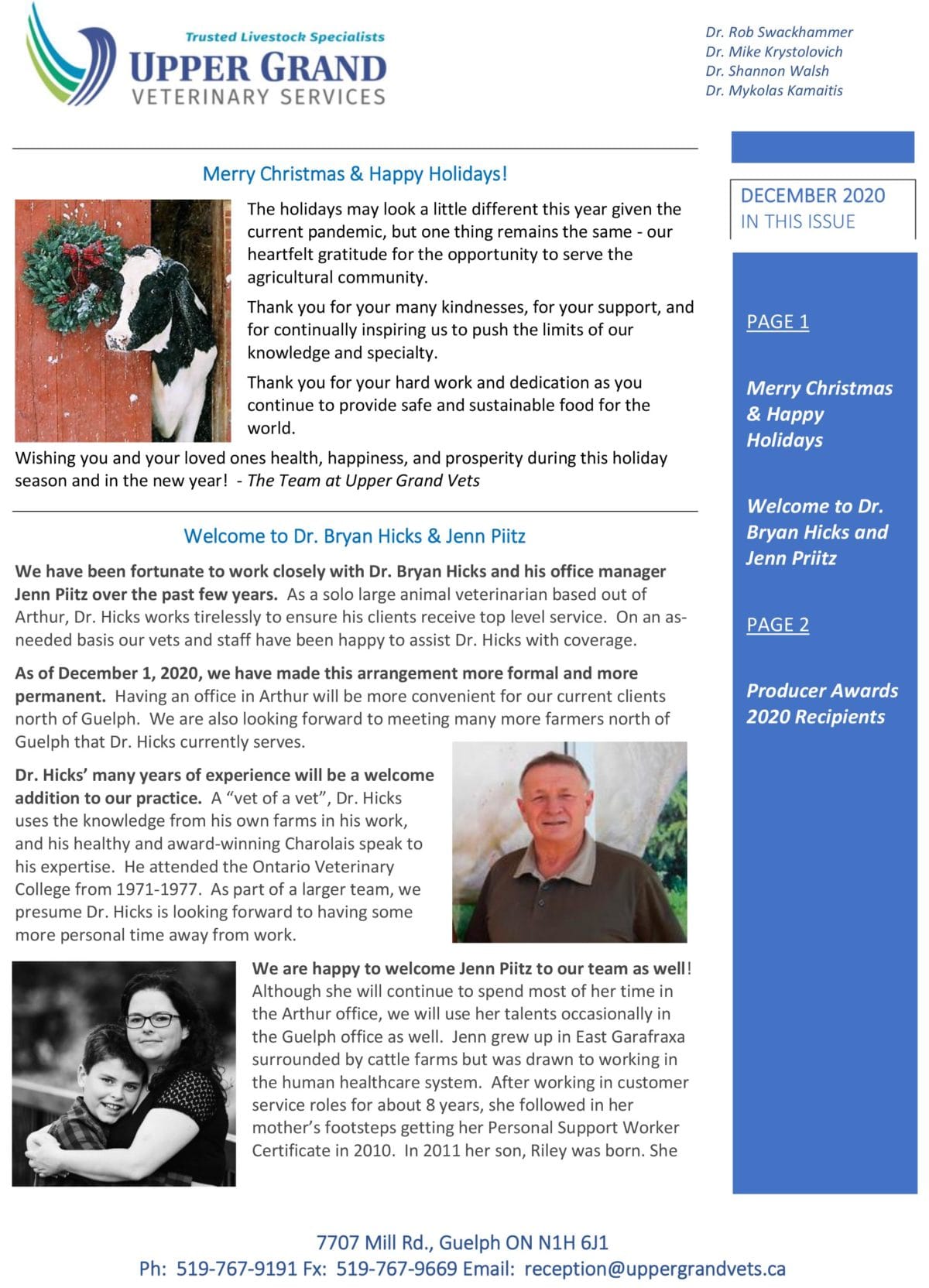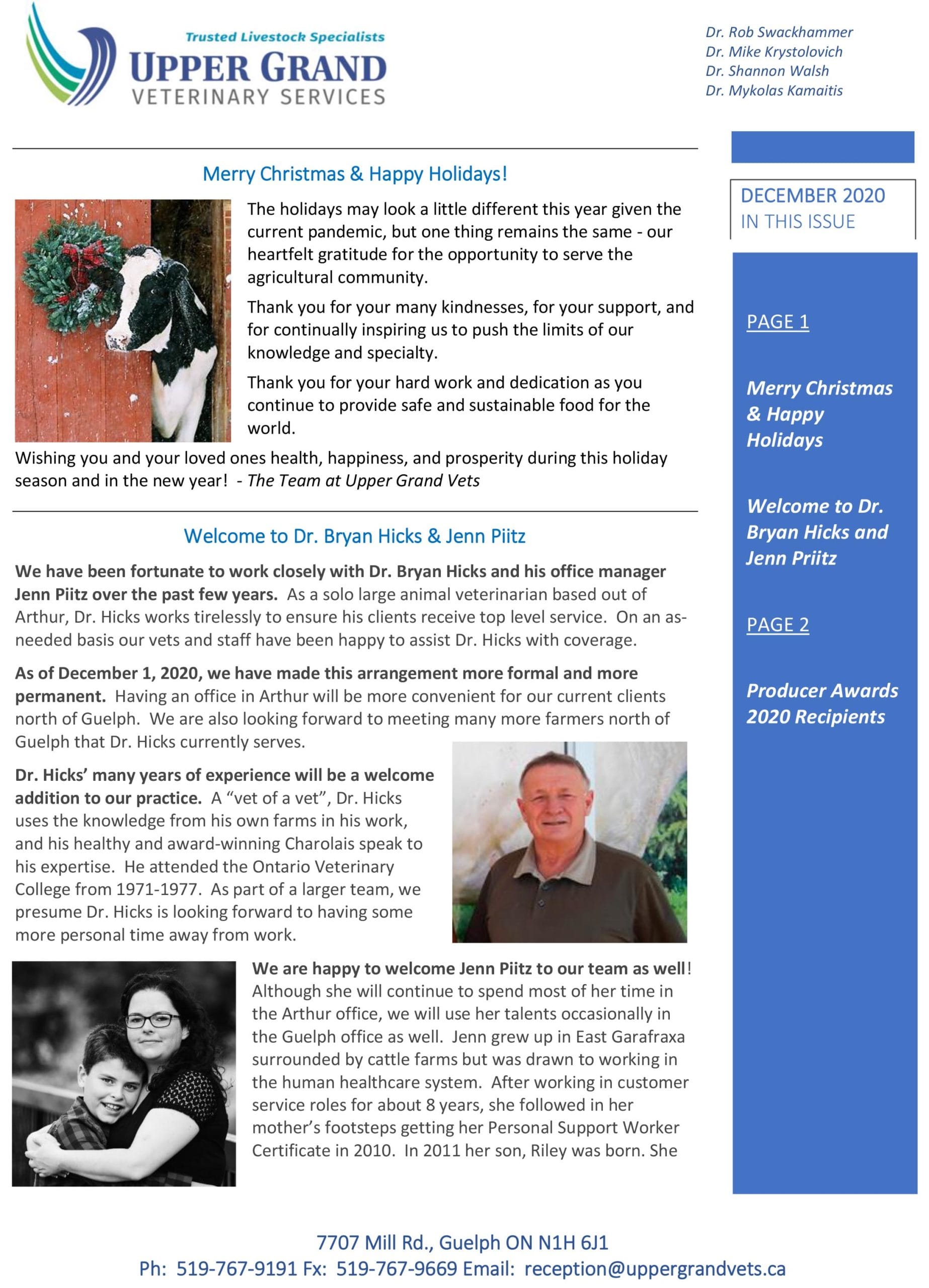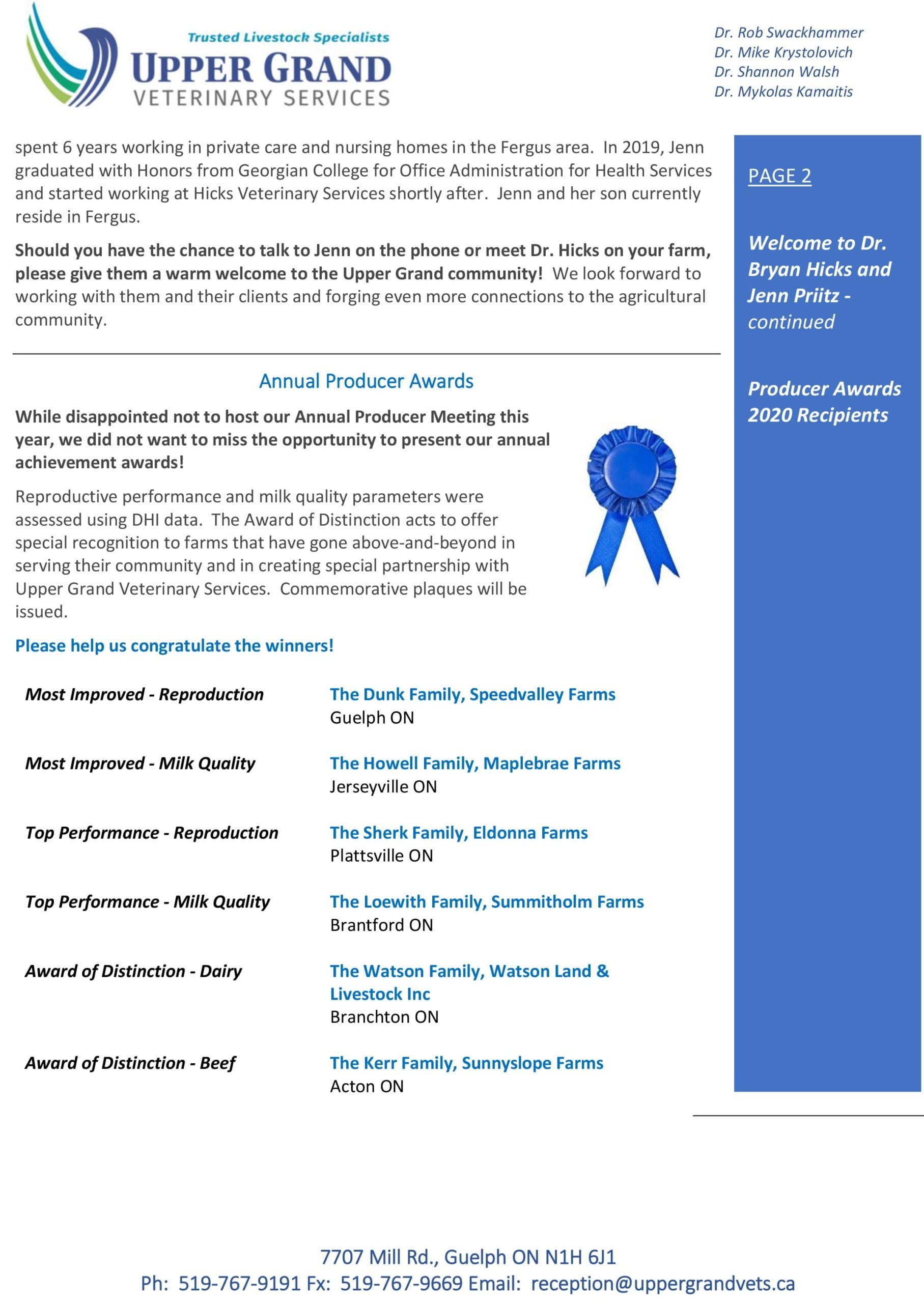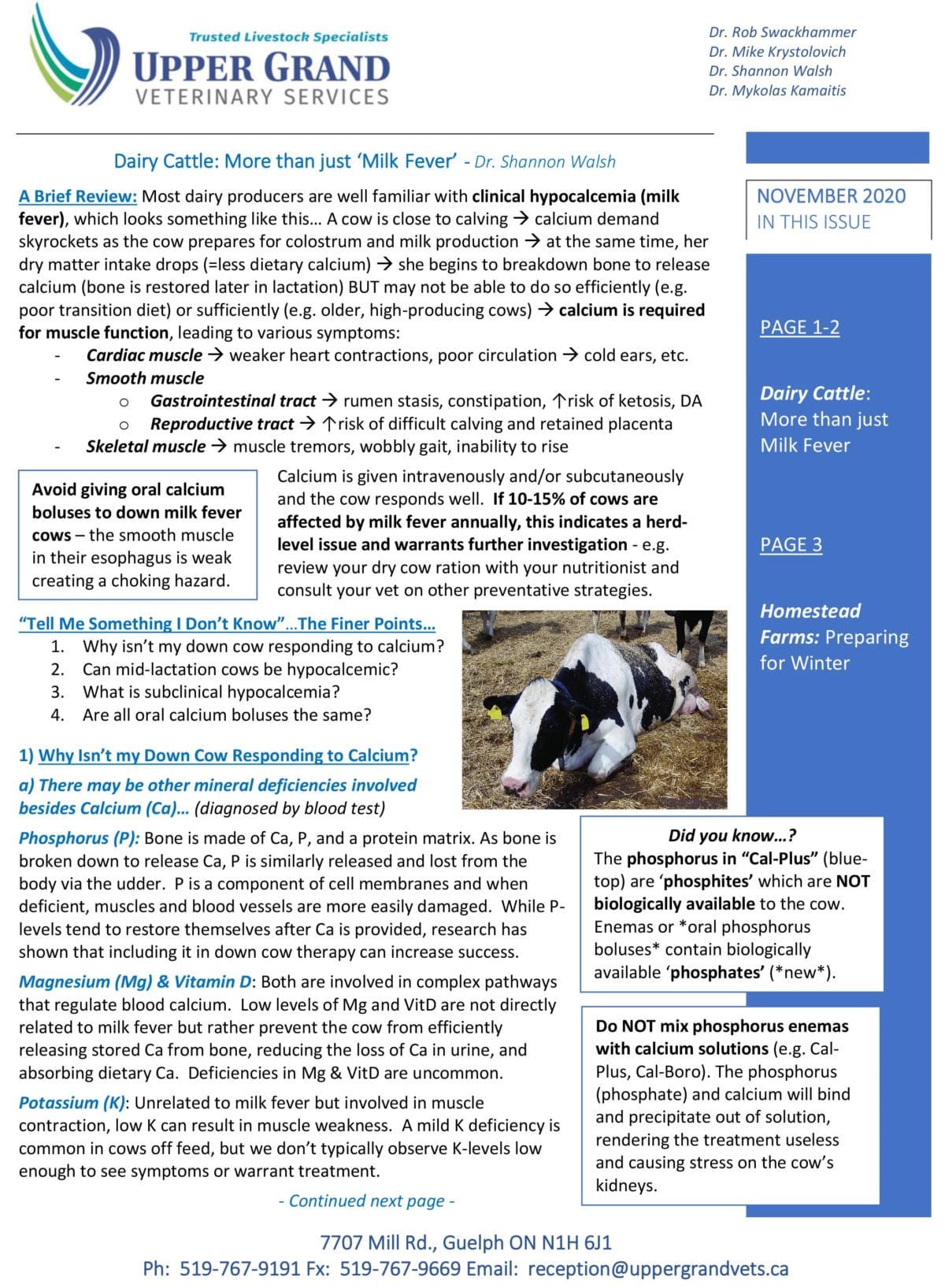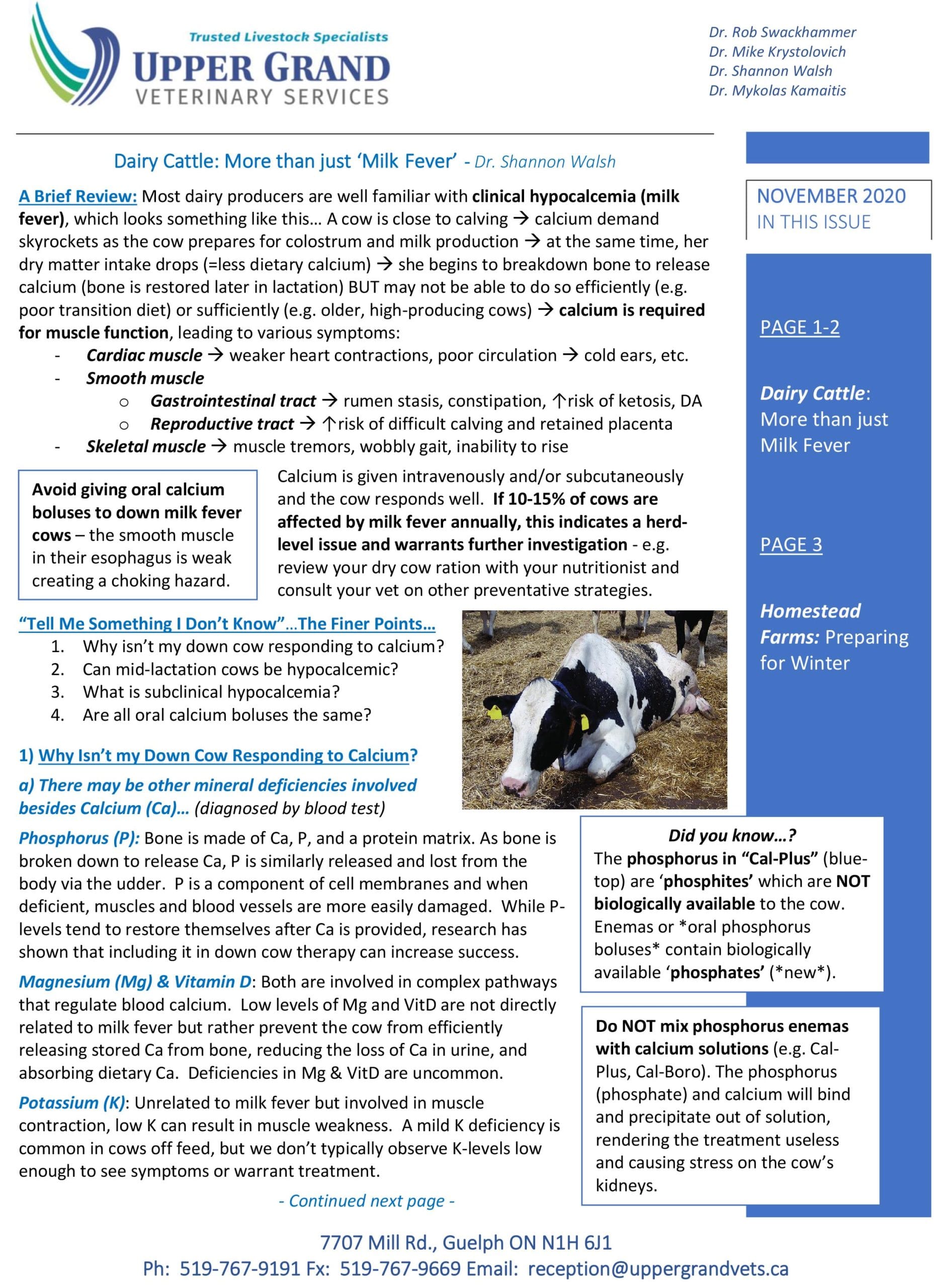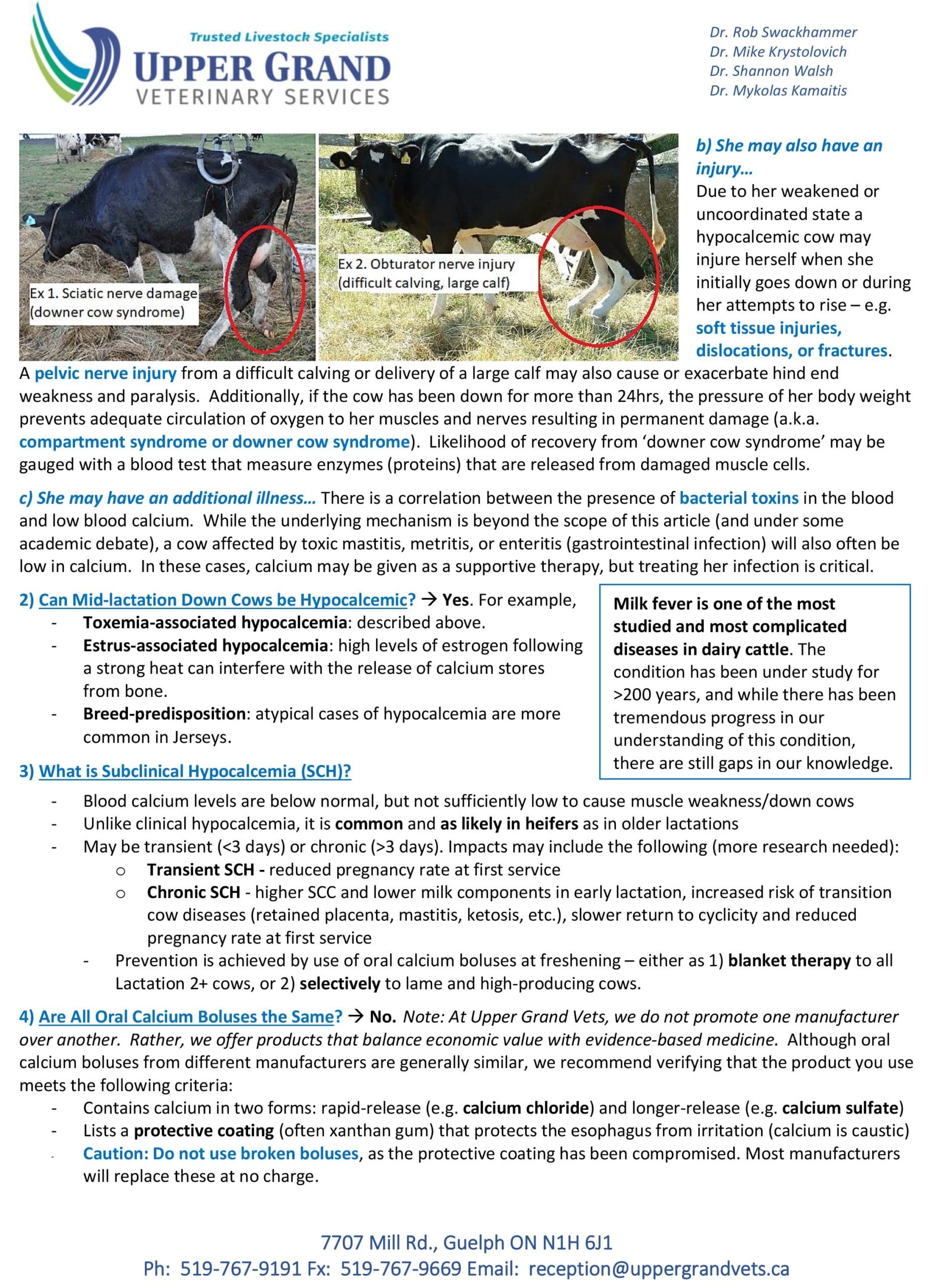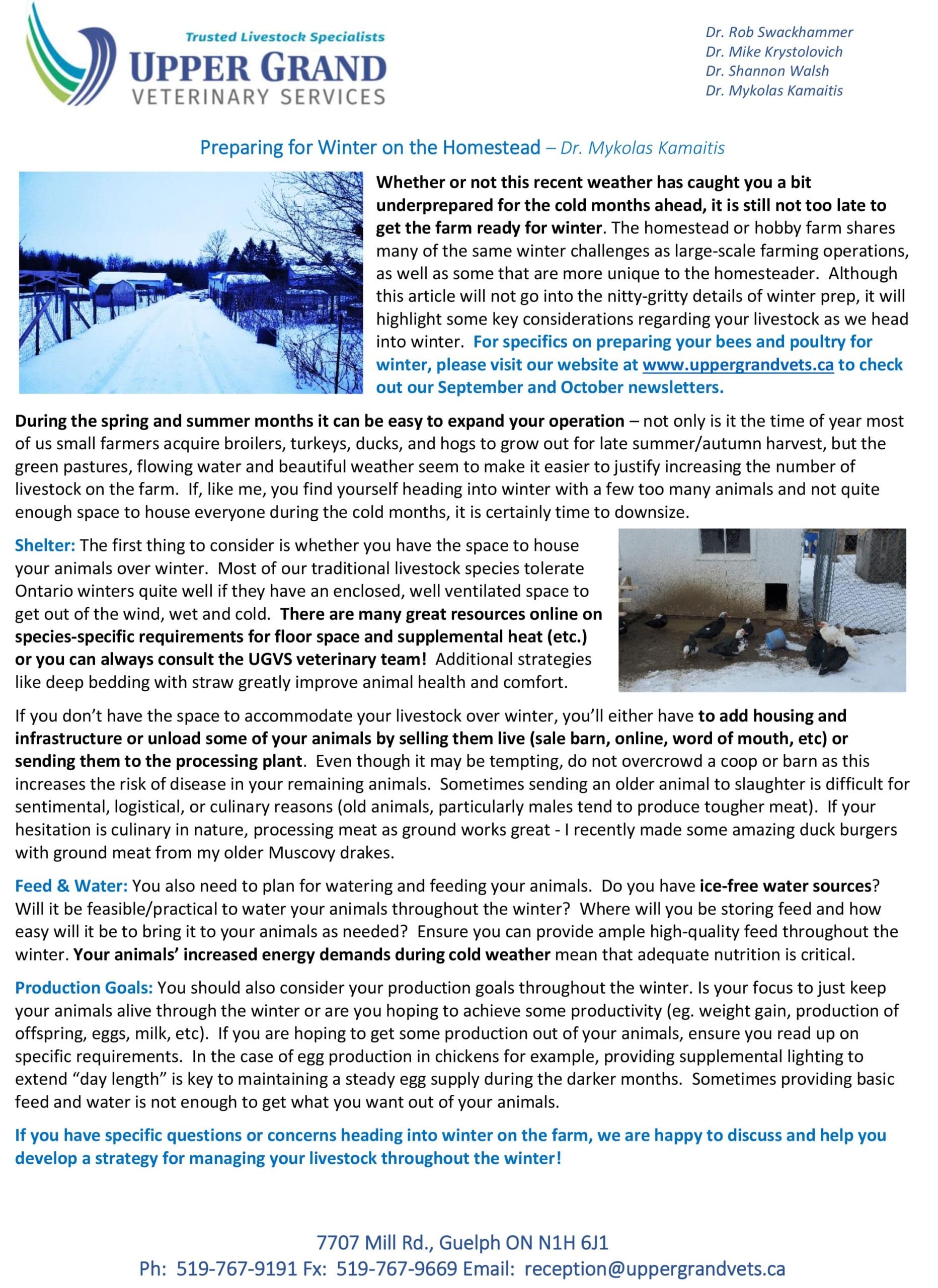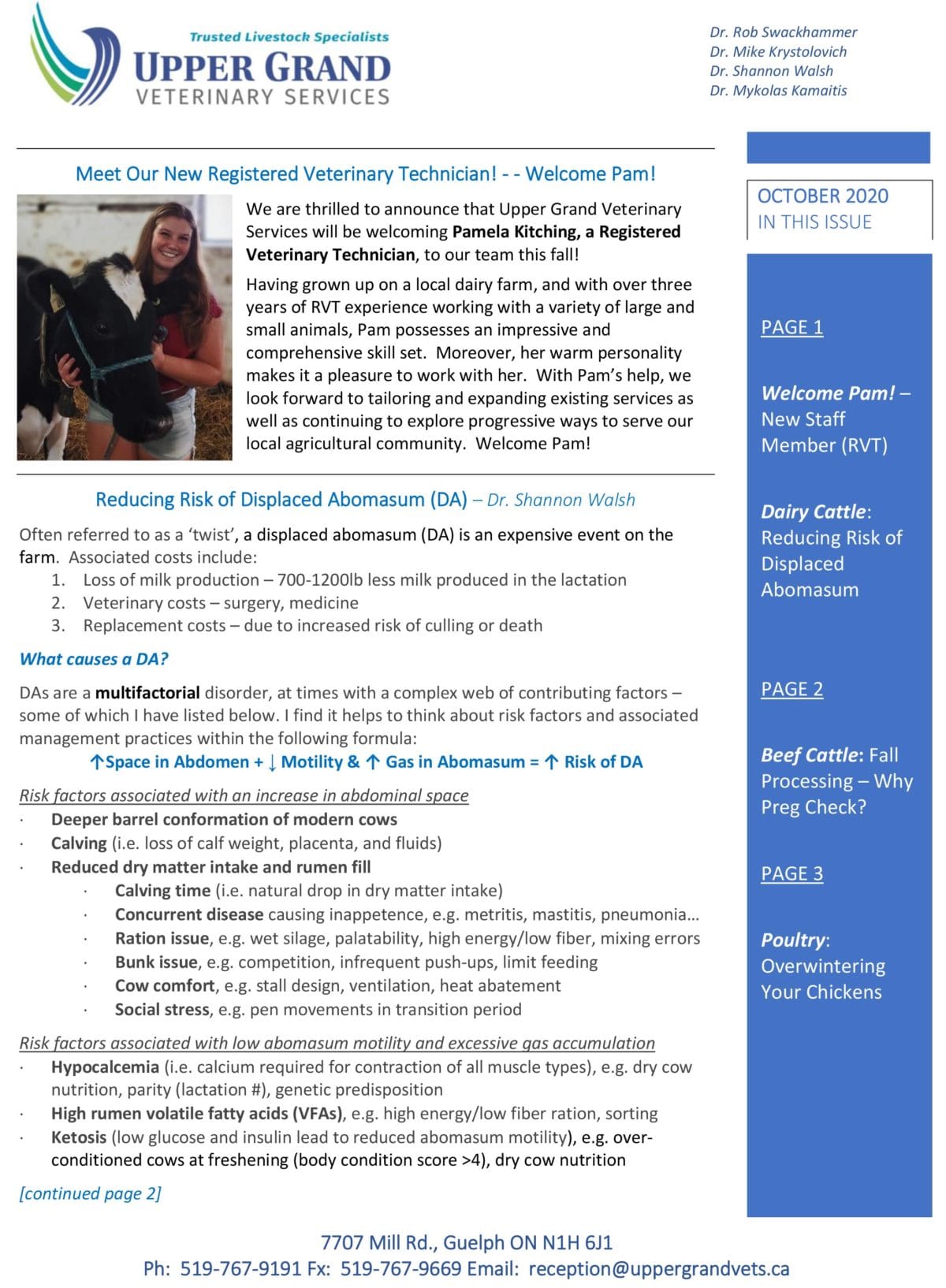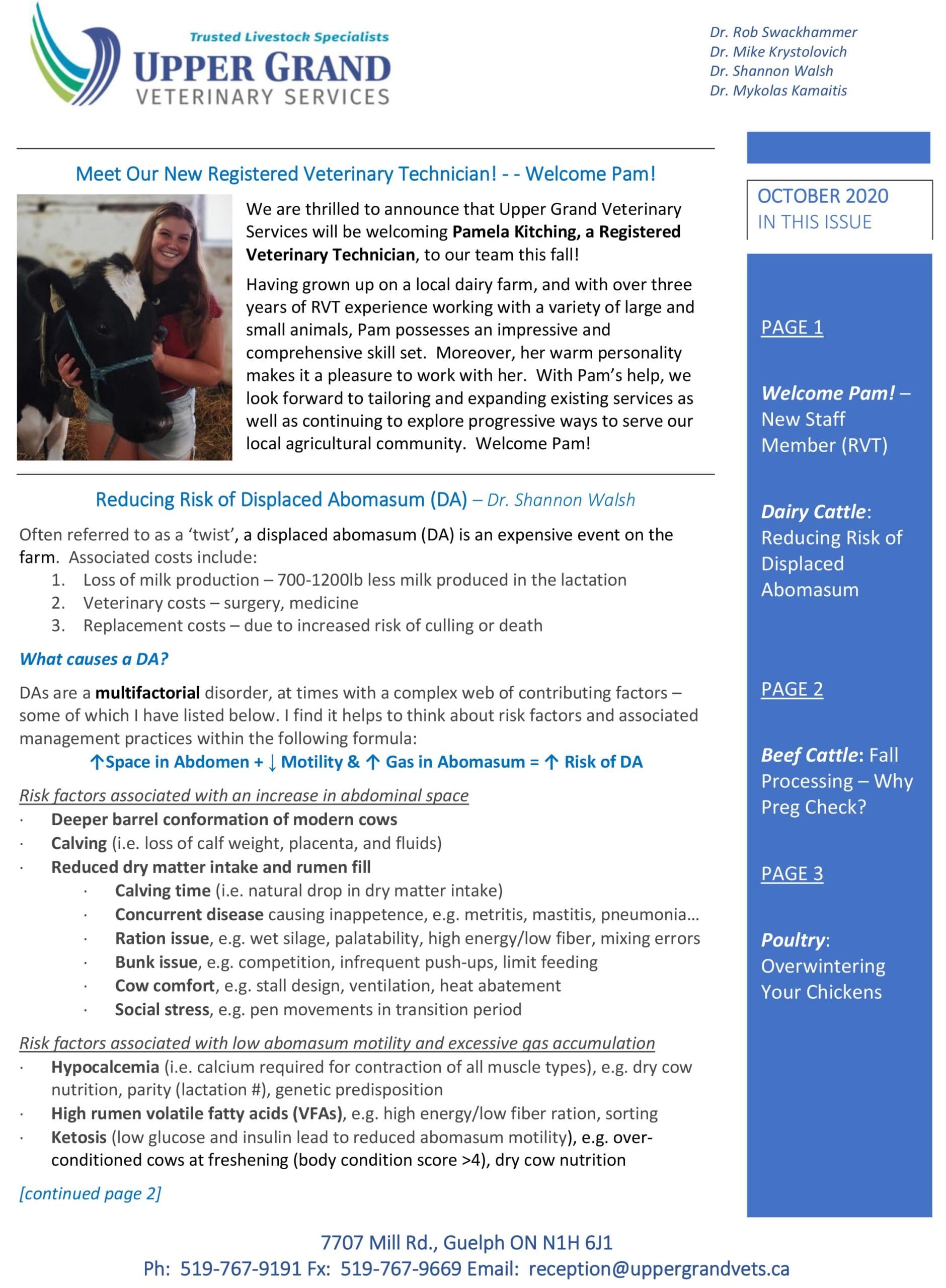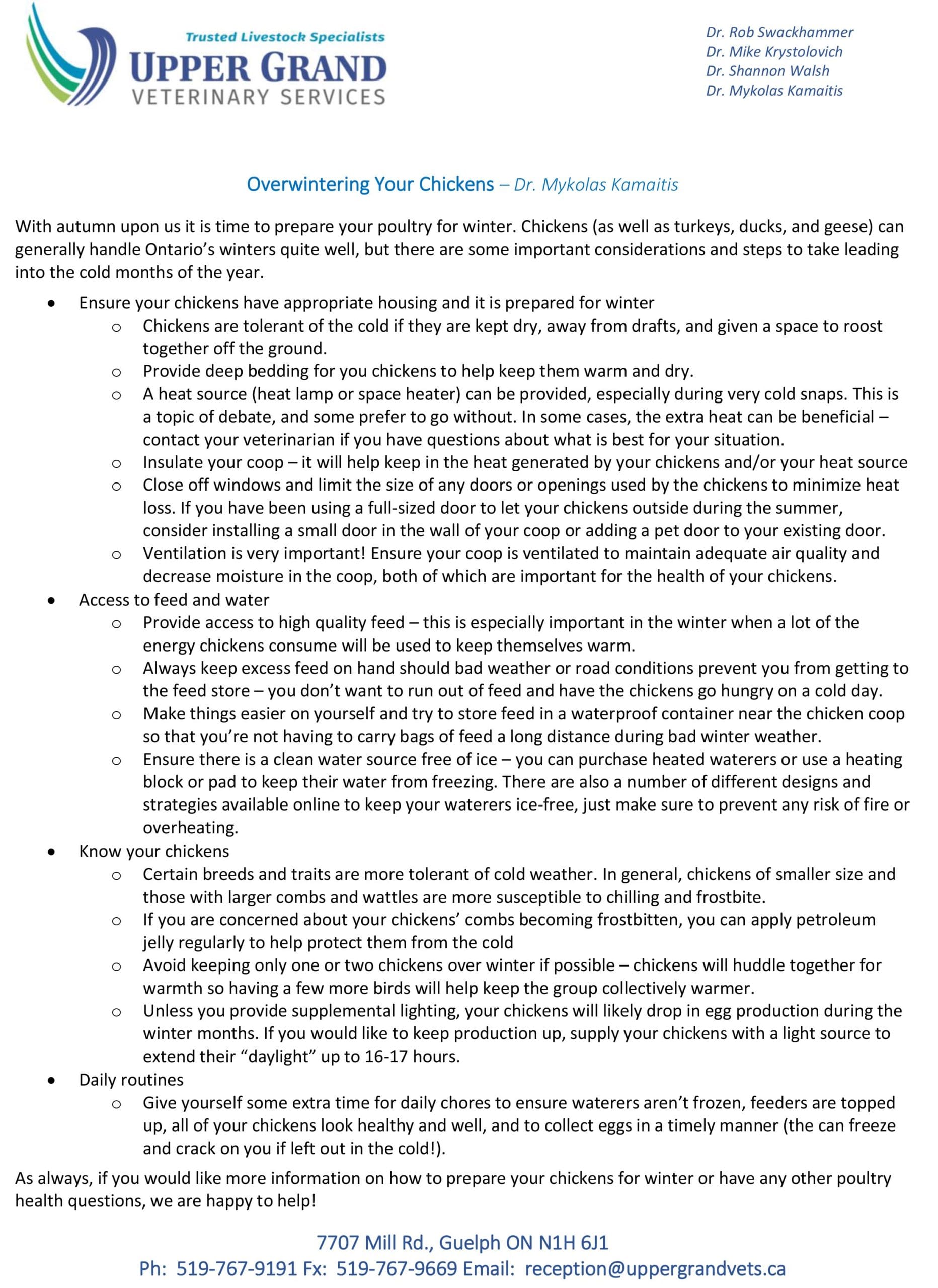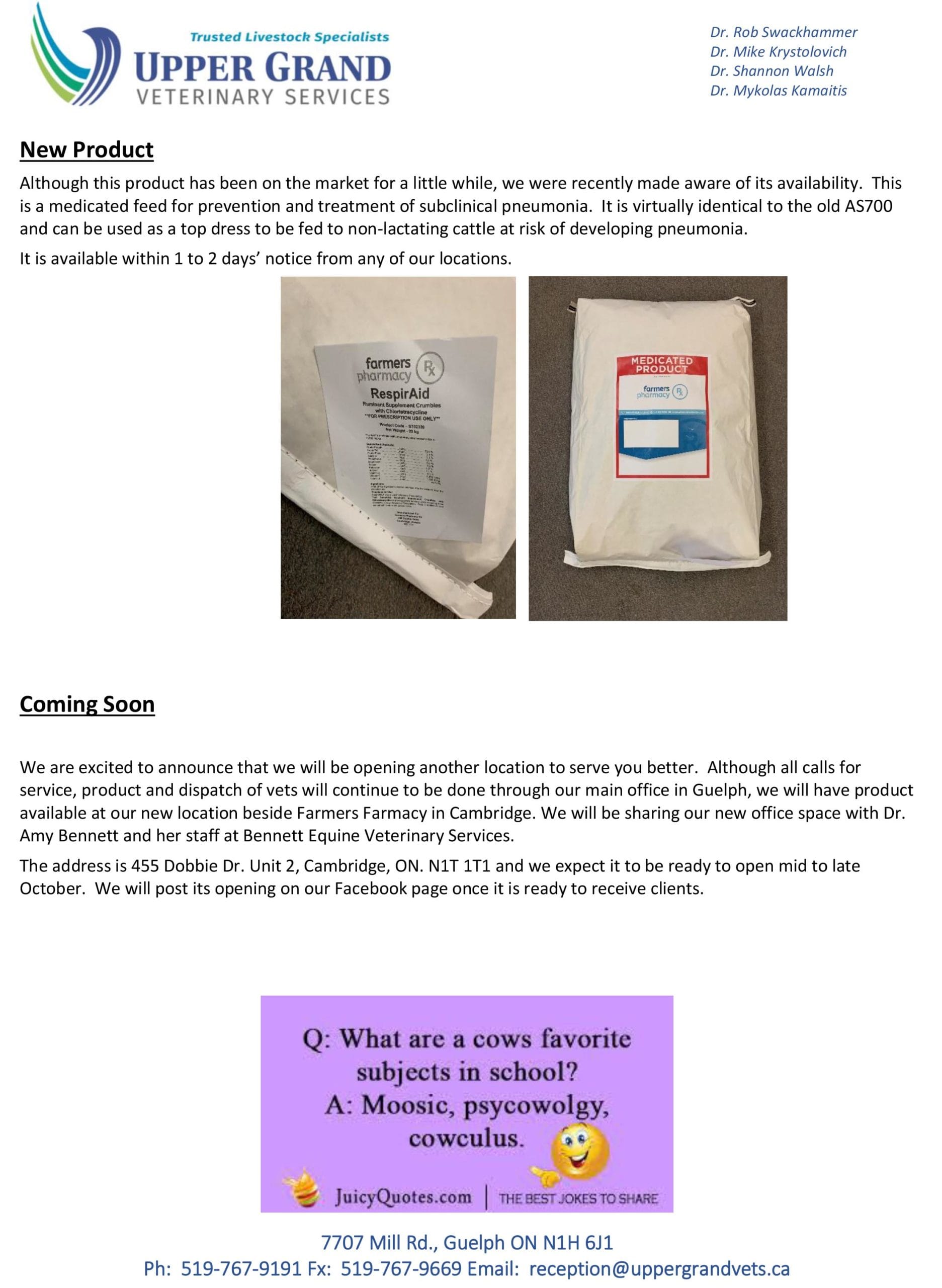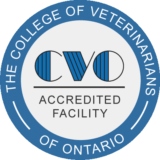With autumn upon us, it is time to prepare your poultry for winter. Chickens (as well as turkeys, ducks, and geese) can generally handle Ontario’s winters quite well, but there are some important considerations and steps to take leading into the cold months of the year.
- Ensure your chickens have appropriate housing and it is prepared for winter
- Chickens are tolerant of the cold if they are kept dry, away from drafts, and given a space to roost together off the ground.
- Provide deep bedding for your chickens to help keep them warm and dry.
- A heat source (heat lamp or space heater) can be provided, especially during very cold snaps. This is a topic of debate, and some prefer to go without it. In some cases, the extra heat can be beneficial – contact your veterinarian if you have questions about what is best for your situation.
- Insulate your coop – it will help keep in the heat generated by your chickens and/or your heat source
- Close off windows and limit the size of any doors or openings used by the chickens to minimize heat loss. If you have been using a full-sized door to let your chickens outside during the summer, consider installing a small door in the wall of your coop or adding a pet door to your existing door.
- Ventilation is very important! Ensure your coop is ventilated to maintain adequate air quality and decrease moisture in the coop, both of which are important for the health of your chickens.
- Access to feed and water
- Provide access to high-quality feed – this is especially important in the winter when a lot of the energy chickens consume will be used to keep themselves warm.
- Always keep excess feed on hand should bad weather or road conditions prevent you from getting to the feed store – you don’t want to run out of feed and have the chickens go hungry on a cold day.
- Make things easier on yourself and try to store feed in a waterproof container near the chicken coop so that you’re not having to carry bags of feed a long-distance during bad winter weather.
- Ensure there is a clean water source free of ice – you can purchase heated waterers or use a heating block or pad to keep their water from freezing. There are also a number of different designs and strategies available online to keep your waterers ice-free, just make sure to prevent any risk of fire or overheating.
- Know your chickens
- Certain breeds and traits are more tolerant of cold weather. In general, chickens of smaller size and those with larger combs and wattles are more susceptible to chilling and frostbite.
- If you are concerned about your chickens’ combs becoming frostbitten, you can apply petroleum jelly regularly to help protect them from the cold
- Avoid keeping only one or two chickens over winter if possible – chickens will huddle together for warmth so having a few more birds will help keep the group collectively warmer.
- Unless you provide supplemental lighting, your chickens will likely drop in egg production during the winter months. If you would like to keep production up, supply your chickens with a light source to extend their “daylight” up to 16-17 hours.
- Daily routines
- Give yourself some extra time for daily chores to ensure waterers aren’t frozen, feeders are topped up, all of your chickens look healthy and well, and to collect eggs in a timely manner (the can freeze and crack on you if left out in the cold!).
As always, if you would like more information on how to prepare your chickens for winter or have any other poultry health questions, we are happy to help!
– Dr. Mykolas Kamaitis
If you have any questions on these or other topics, please do not hesitate to contact one of our Veterinarians.
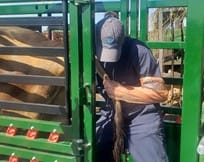
Fall processing is right around the corner! It is an exciting time to appreciate the progress your spring-born calves have made! And of course, an integral part of fall processing is pregnancy diagnosis. There is time and expense associated with moving cattle through the chute and having them checked, so I think it makes sense to take the opportunity to pause and reflect on why we recommend the practice. What do we gain by performing preg checks?
Measures reproductive health in the herd and flags problems early
- Low conception? consider bull infertility, cow infertility (infectious?), and nutrition issues
- Broad range of gestational stages? consider infectious causes of early embryonic death/early return to heat, whether too many poor breeders are being kept rather than culled, if the bull might have low libido/chronic lameness/other issue, and if too few bulls
Improves farm profitability and helps to guide management decisions
- Culling of open females permits efficient use of farm resources – especially feed and bedding over winter
- Confirmation of reproductive status (preg/open) and fetal sex may be valuable for marketing purposes
- Allows identification and selling of late-calvers to improve calf crop uniformity
- Provides the opportunity to create different calving groups (early/late) for more intensive calving supervision
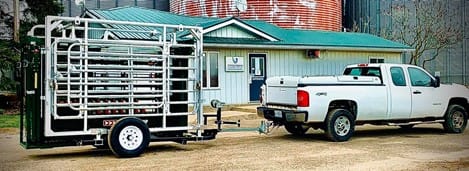
– Dr. Shannon Walsh
If you have any questions on these or other topics, please do not hesitate to contact one of our Veterinarians.
Often referred to as a ‘twist’, a displaced abomasum (DA) is an expensive event on the farm. Associated costs include:
- Loss of milk production – 700-1200lb less milk produced in the lactation
- Veterinary costs – surgery, medicine
- Replacement costs – due to increased risk of culling or death
What causes a DA?
DAs is a multifactorial disorder, at times with a complex web of contributing factors – some of which I have listed below. I find it helps to think about risk factors and associated management practices within the following formula:
↑Space in Abdomen + ↓ Motility & ↑ Gas in Abomasum = ↑ Risk of DA
Risk factors associated with an increase in abdominal space
- Deeper barrel conformation of modern cows
- Calving (i.e. loss of calf weight, placenta, and fluids)
- Reduced dry matter intake and rumen fill
- Calving time (i.e. natural drop in dry matter intake)
- Concurrent disease-causing inappetence, e.g. metritis, mastitis, pneumonia…
- Ration issue, e.g. wet silage, palatability, high energy/low fibre, mixing errors
- Bunk issue, e.g. competition, infrequent push-ups, limit feeding
- Cow comfort, e.g. stall design, ventilation, heat abatement
- Social stress, e.g. pen movements in the transition period
Risk factors associated with low abomasum motility and excessive gas accumulation
- Hypocalcemia (i.e. calcium required for contraction of all muscle types), e.g. dry cow nutrition, parity (lactation #), genetic predisposition
- High rumen volatile fatty acids (VFAs), e.g. high energy/low fiber ration, sorting
- Ketosis (low glucose and insulin lead to reduced abomasum motility), e.g. over-conditioned cows at freshening (body condition score >4), dry cow nutrition
How do I reduce the risk of a DA in my herd?
It is not realistic to expect the elimination of DAs, but rather a target of <4% annually is achievable. Review your farm protocols and engage your vet and nutritionist farm advisors on the following subjects:
- Monitoring, preventing and treating fresh cow illnesses
- Nutrition management
-
-
- Ration formulation for optimal dry matter intake and suitable fibre/energy levels
- Critical control points for delivery of a consistent and appropriately processed ration
-
- Regular dry matter testing
-
- Ensuring feed changes are gradual and are preceded by forage testing and ration formulation
Facility and cow comfort strengths and opportunities – e.g. stall design, social groupings, bunk competition
– Dr. Shannon Walsh
If you have any questions on these or other topics, please do not hesitate to contact one of our Veterinarians.



